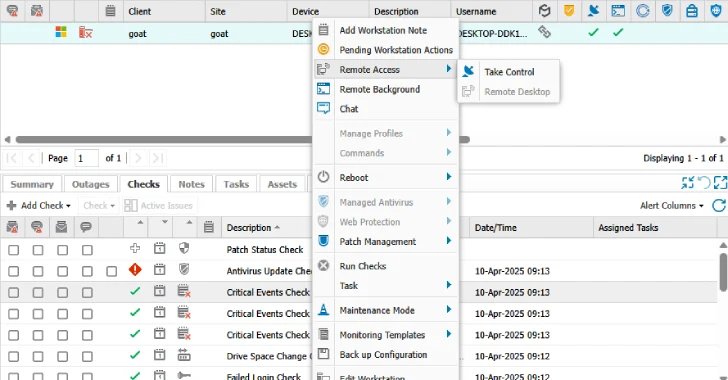Summary Points
-
Targeted Campaign: Since January 2025, a new phishing campaign has been targeting Portuguese-speaking users in Brazil, using spam emails about overdue bills from financial institutions to lure recipients into clicking on malicious Dropbox links.
-
Exploited Tools: The attackers exploit trial versions of remote monitoring and management (RMM) software, like N-able RMM and PDQ Connect, which allow unauthorized access to users’ systems and the ability to install further malicious tools.
-
Victim Profile: The campaign primarily targets C-level executives and HR/financial personnel across various industries, including education and government institutions, through sophisticated phishing methods.
- Evolving Threat Landscape: Cybercriminals are continuously adapting their tactics, employing numerous phishing strategies and exploitation techniques to bypass modern security defenses, posing significant challenges for detection and mitigation.
The Core Issue
A recent cybersecurity alert has emerged highlighting a sinister campaign targeting Portuguese-speaking users in Brazil, particularly C-level executives and financial professionals, through deceptive emails that exploit the Brazilian electronic invoice system, NF-e. Since January 2025, attackers have crafted spam messages pretending to originate from reputable financial institutions and cell phone carriers, which prompt unsuspecting victims to click on links leading to malicious content hosted on Dropbox. The primary tools implicated in this attack involve commercial remote monitoring software like N-able RMM and PDQ Connect, enabling the assailants to gain remote access to victims’ systems and subsequently install additional malware, including ScreenConnect.
The operation appears to be orchestrated by an initial access broker (IAB) intent on leveraging free trial versions of these RMM tools to gain unauthorized entry. This specific campaign, reported by Cisco Talos researcher Guilherme Venere, underscores a troubling trend where adversaries increasingly harness legitimate software to circumvent cybersecurity measures. In light of this threat, N-able has acted to disable affected trial accounts, yet the growing sophistication of phishing tactics necessitates continued vigilance, as articulated by Intezer researcher Yuval Guri, who notes that the evolution of phishing methods poses persistent challenges for modern security infrastructures.
What’s at Stake?
The ongoing targeting of Portuguese-speaking users in Brazil with malicious remote monitoring and management (RMM) software poses significant risks not just to direct victims, but also to an array of businesses, organizations, and users within the larger ecosystem. If these phishing campaigns succeed in compromising sensitive systems—particularly in sectors like finance, education, and government—they can facilitate unauthorized access to critical data and operational infrastructures, potentially leading to massive data breaches. Furthermore, the exploitation of RMM tools often implies that attackers have the capacity to deploy additional malware, escalating the severity of incidents and amplifying their impact across interconnected chains of supply and communication. As these sophisticated threats burgeon, they undermine consumer trust and may compel organizations to increase their security expenditures, diverting crucial resources from innovation and growth. In a hyper-connected world, the ripple effects of such incidents can destabilize entire markets and erode confidence across diverse sectors, ultimately jeopardizing the survival of vulnerable institutions that depend on robust cybersecurity defenses.
Possible Next Steps
The rapid evolution of cyber threats demands immediate and effective responses, particularly when initial access brokers are leveraging avenues like NF-e spam to target executives in Brazil. Timely remediation not only safeguards sensitive data but also fortifies organizational resilience against future incursions.
Mitigation Steps
- Implement Advanced Threat Detection
- Conduct Comprehensive Training
- Strengthen Email Filtering
- Enforce Multi-Factor Authentication (MFA)
- Regularly Update Software
- Monitor Network Traffic
- Isolate Infected Systems
- Report to Authorities
NIST CSF Guidance
NIST Cybersecurity Framework emphasizes proactive measures. Specifically, the framework suggests focusing on the "Protect" function and consulting SP 800-53 for detailed controls and best practices to mitigate such threats.
Stay Ahead in Cybersecurity
Stay informed on the latest Threat Intelligence and Cyberattacks.
Understand foundational security frameworks via NIST CSF on Wikipedia.
Disclaimer: The information provided may not always be accurate or up to date. Please do your own research, as the cybersecurity landscape evolves rapidly. Intended for secondary references purposes only.
Cyberattacks-V1

